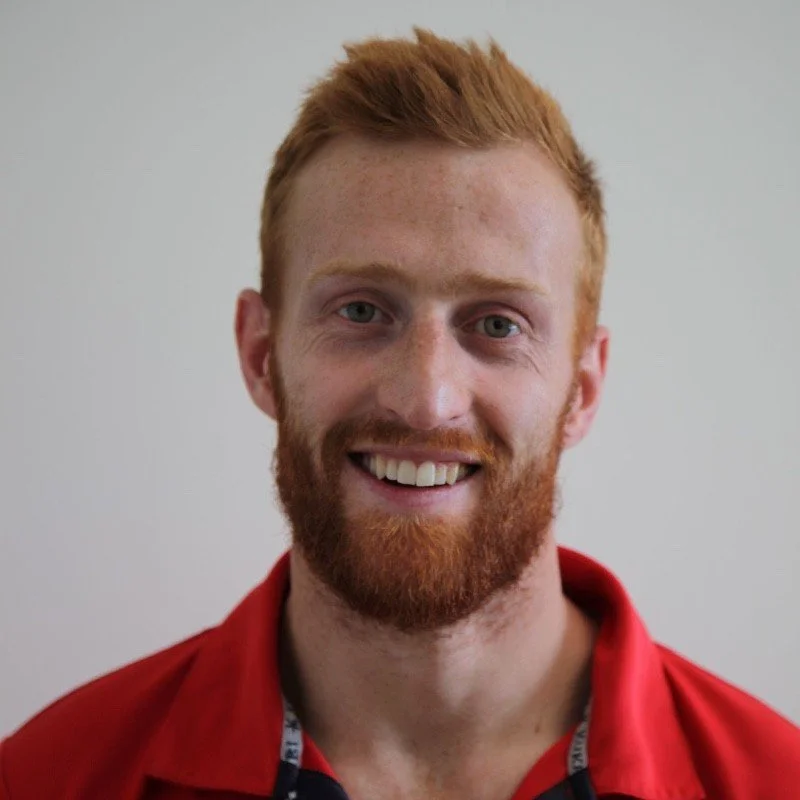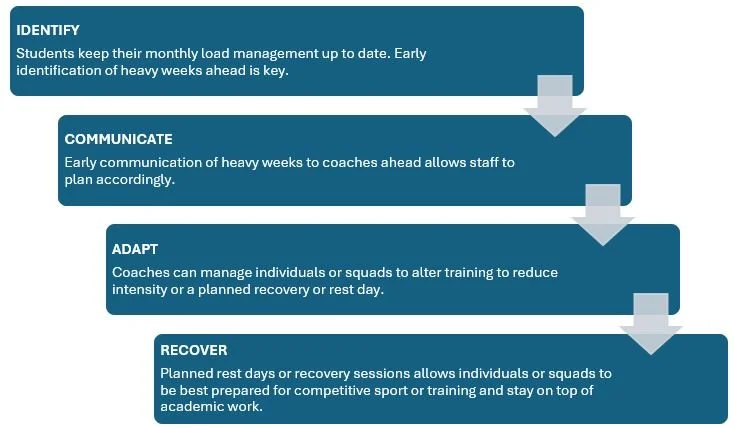Striking the balance between performance and well-being with student-athletes
This article comes from Tim Thompson, a long-standing Collaborate Sports Community Member and past mentee. I have admired Tim’s desire to bring high-level physical development to youth and school systems and so I invited him to write a reflective blog to help others in the same environment. Below, Tim details his take on managing competing workload demands in his school when it comes to optimising long-term athletic development.
At Taunton School, we passionately encourage students to engage in various sports from an early age, recognising the broad benefits of multi-sport participation. However, as young athletes mature, many face the challenge of narrowing their focus while juggling demanding schedules. The challenge of working at a school with multiple talented students across a range of sports is helping them identify and structure their week. Some students may have up to 3 different coaches for one sport (School, club and academy) whilst also playing a different sport for school or preparing for the following term sport.
The Challenge of overload
The “more is better” mindset often drives highly motivated students to push beyond their limits. This, alongside overlapping commitments, can lead to overuse injuries with inadequate recovery (Brink et al., 2014). Over the last 7 years at Taunton School, overuse injuries have accounted for 48% of all documented injuries, with the most common injury site being the Back (26%), Knee (22%) and ankle (14%).
For motivated young athletes, the temptation is to work hard all the time, which may mean potentially overdoing it. When we then add in Core PE, school games, and other physical activities, coupled with growth and maturation, injuries may be on the horizon. Additionally, the risk of injuries for female athletes is heightened due to structural and hormonal differences. The complexity of the menstrual cycle and its effect on training may add new physical and mental stress, resulting in changes in training and recovery (Temm et al., 2022).
As coaches, we must ensure students balance doing too much and too little. Sport Scholars are rewarded scholarships based on their sporting ability, future potential and personable traits. Thus, they are motivated to improve and reach the next level, while being in a new school environment, they are keen to impress. I am sure you have all heard the saying ‘Availability is the best ability’. Saturday fixtures are the highlight of the week for these performers, so ensuring they are well-rested and primed, and ready to go is all part of the puzzle. As a school with plenty of high performers, managing weekly training load is imperative in order to get the best out of our students.
Striking the balance: A holistic approach
So, how do we manage this? At School, we take a holistic view and manage student load by asking individuals to input their school sports co-curricular activities and club/academy training into a purpose-designed weekly calendar to give an overview of their week. We then use a colour-coded system alongside to traffic light their week.
· Green equates to a rest day or light training day (team run or shooting practice)
· Amber means a double training day
· Red is match day or potentially 3 training sessions.
The colour coded system offers a clear visual representation of their weekly intensity, helping both students and coaches identify potential overload. We aim to have at least 1-2 rest days a week, but this often goes amiss.
Training load may vary week to week due to midweek fixtures or cup competitions; therefore, a sudden spike in load may increase. Acute rises to training load (15%) may increase the risk of injury (up to 50%) without sufficient recovery. We ask students to write down all their training across the week in advance and then use the colour-coded system to help them visually identify the intensity of their week. From here, we can identify students who need support in managing their week, but it also sparks conversations with students about how best to manage their training. Working through their timetable, followed by a short conversation, can make a game-changing difference to their performance and recovery. This can then lead to further conversations with the Head of Sports, to allow individuals to rest in certain sessions to ensure they are having periods of recovery, especially those who may be on academy pathway sport.
Insight collection and decision making flow chart used to optimise outcomes.
We also allow students who may be engaging in a high volume of load, such as swimmers who swim for both school and club, to utilise games to complete work to stay on top of their academics and to avoid unnecessary overloading.
Weekly sports department meetings are instrumental in planning around demanding periods, such as midweek fixtures, tournaments or exam weeks, and we discuss how we can best support those students and teams to prevent too much overloading physically and mentally, as well as utilising recovery sessions as a way to reduce training volume. From a wellbeing perspective, this information is then passed onto the student’s tutor who can further initiate conversations to align both academics and sport to help maintain the balance and ensure the students wellbeing is at the heart of everything.
Parents play a pivotal role in supporting balanced schedules. We ensure consistent messaging and alignment across school and home environments by keeping them informed. For students involved in academies or external clubs, early communication with external coaches helps manage workload collaboratively, ensuring breaks are planned without the feeling of guilt or misunderstanding.
Our ultimate goal is empowering students to recognise and manage their schedules independently. By regularly engaging them in discussions about their weekly plans and recovery needs, we are fostering self-awareness and encouraging lifelong skills in load management. Already, we are seeing progress, with students taking proactive steps to balance their commitments.
Effective load management is more than just preventing injuries, it is about supporting overall wellbeing. By integrating sports staff, tutors and parents into the process, we create a unified approach that prioritises our students' physical, mental and academic health. While our methods are straightforward, such as using an Excel sheet, they are impactful. Through this collective effort, we aim to ensure our young athletes remain healthy, motivated and ready to perform at their best.
At Taunton School, we believe that availability is truly the best ability. By prioritising balance and collaboration, we are laying down the foundations for sustained success in sports and beyond.
A huge thanks to Tim for taking the time to reflect on their approach to youth sport load management. You can reach out to Tim on LinkedIn HERE


